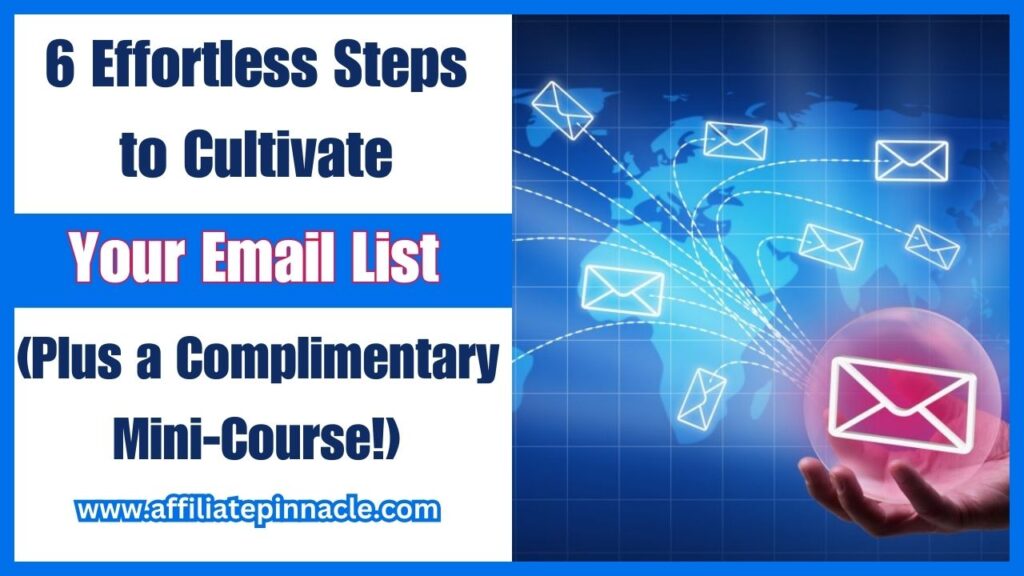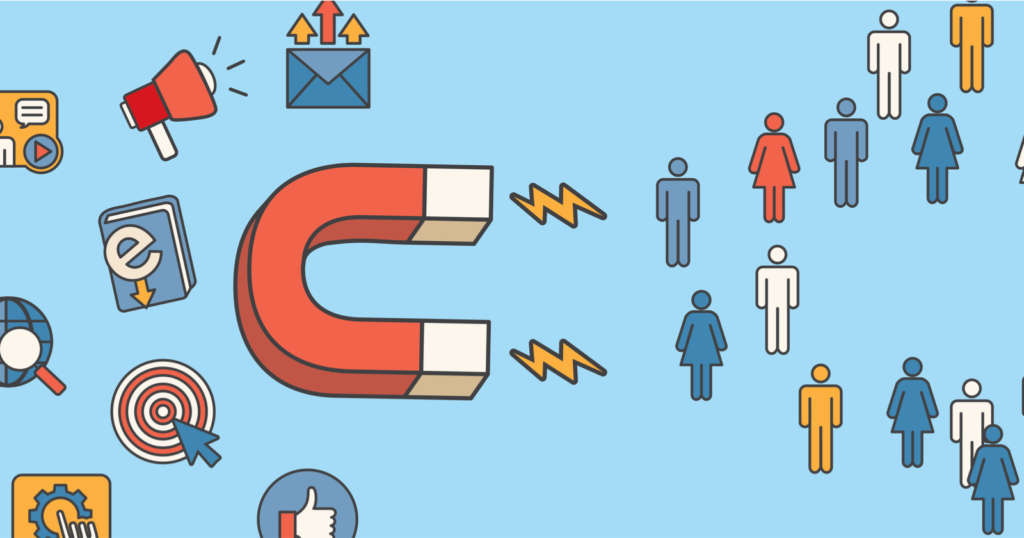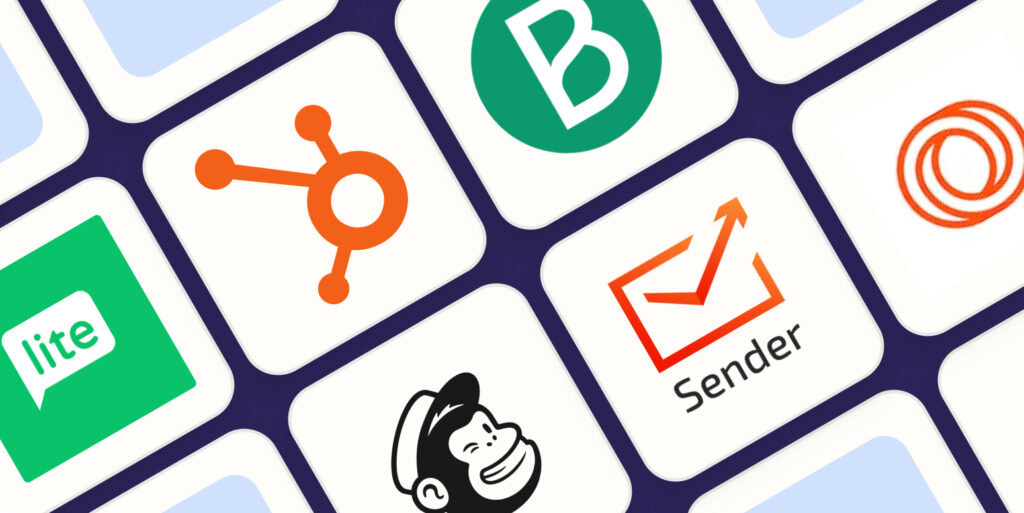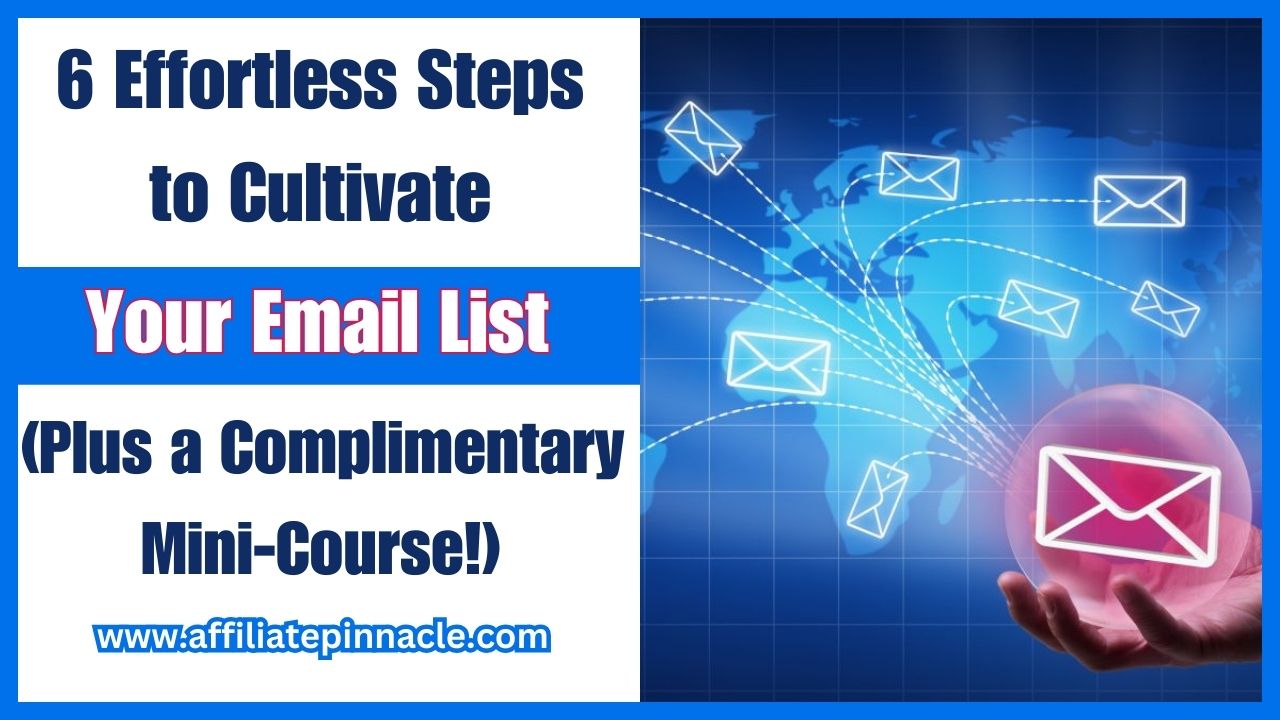In the digital landscape, an email list is a powerful tool for fostering connections, nurturing leads, and building a community around your brand. As a business or content creator, cultivating a robust email list is key to engaging your audience effectively. Fortunately, developing and expanding your email list doesn’t have to be a daunting task. Here are six effortless steps to help you cultivate and grow your email list, accompanied by insights from a complimentary mini-course.
“Cash Flow Explosion: Start Earning Big Bucks TODAY – Absolutely FREE Training!”

1. Craft an Irresistible Lead Magnet: The first step to growing your email list is offering something valuable in exchange for your audience’s email addresses. Develop a compelling lead magnet, such as an ebook, a toolkit, or an exclusive video series, tailored to your audience’s needs and interests. Your complimentary mini-course can delve into the art of creating irresistible lead magnets that attract and retain subscribers.
2. Optimize Opt-In Forms: Strategically placed opt-in forms on your website or social media platforms are gateways to your email list. Design these forms to be visually appealing, concise, and easy to fill out. The mini-course could guide you through optimizing these forms, offering tips on placement, design elements, and effective call-to-action strategies.
3. Leverage Content Upgrades: Enhance the value of your content by offering content upgrades – bonus materials that complement your existing content. These upgrades entice readers to subscribe for exclusive access, enriching their experience and encouraging them to join your email list. Your mini-course might explore various content upgrade ideas and their implementation.
4. Foster Engagement with Interactive Content: Interactive content, such as quizzes, polls, or assessments, captivates your audience and encourages active participation. Use these tools strategically to gather email addresses while providing an enjoyable and informative experience. Your complimentary course could delve into the creation and deployment of interactive content for optimal engagement.
“Cash Flow Explosion: Start Earning Big Bucks TODAY – Absolutely FREE Training!”
5. Run Enticing Giveaways or Contests: Entice your audience to join your email list by hosting engaging giveaways or contests. Encourage participation by offering prizes or exclusive access, driving traffic and subscriptions. The mini-course might detail the steps involved in organizing successful giveaways that not only attract but also retain subscribers.
6. Implement Segmentation and Personalization: Segmentation allows you to tailor your email content based on subscriber interests, behaviors, or demographics. Personalized emails resonate better with recipients, fostering a sense of connection and relevance. Your mini-course could explore effective segmentation strategies and the power of personalized communication in email marketing.
In conclusion, building and nurturing an email list is an invaluable asset for any business or content creator. By implementing these six effortless steps and learning from the insights provided in the complimentary mini-course, you can effectively cultivate a thriving email list that fosters engagement, loyalty, and growth within your audience.
Craft an Irresistible Lead Magnet
Crafting an irresistible lead magnet is all about making something so valuable and relevant to your target audience that they can’t resist signing up for it. Here are some key ingredients:

“Cash Flow Explosion: Start Earning Big Bucks TODAY – Absolutely FREE Training!”
- Focus on your audience’s needs and desires. What are their pain points? What are their goals? Create a lead magnet that helps them solve a problem or achieve something they want.
- Offer something specific and actionable. Don’t just say you’ll give them “tips” or “secrets.” Be clear about what they’ll get, like a checklist, template, or mini-course.
- Make it high-quality and valuable. Don’t just slap something together. Put effort into creating something that’s polished, informative, and useful.
- Promote it effectively. Once you’ve created your lead magnet, you need to get it in front of your target audience. Use social media, email marketing, and other channels to spread the word.
Here are some examples of irresistible lead magnets, depending on your niche:
- For a fitness coach: A free workout routine or meal plan
- For a writer: A free ebook or cheat sheet on grammar or writing tips
- For a photographer: A free Lightroom preset or tutorial on how to take better portraits
I hope this gives you a good starting point for crafting your own irresistible lead magnet!
Optimize Opt-In Forms
Optimizing opt-in forms is all about boosting the number of people who sign up for your email list, newsletter, or any other offering you have. It’s like making your “subscribe” button more magnetic!

“Cash Flow Explosion: Start Earning Big Bucks TODAY – Absolutely FREE Training!”
Here are some key ways to optimize your opt-in forms:
Make it easy and quick:
- Keep it short and sweet: Only ask for the essential information, like email address and maybe name. Less typing means less friction.
- Clear and concise messaging: Use strong headlines and calls to action (CTAs) that explain what they’ll get for signing up. Be specific and avoid vague promises.
- Mobile-friendly design: Ensure your form looks good and functions smoothly on all devices, especially smartphones.
Offer something valuable:
- Highlight the benefits: What’s in it for them? Exclusive content, discounts, insider tips? Make the value proposition clear and enticing.
- Cater to your audience: Offer lead magnets (freebies) relevant to their interests and needs. For example, a cooking blog might offer a recipe ebook, while a gamer might want access to a beta version of a new game.
- Personalize the experience: If possible, segment your audience and offer different opt-in forms with targeted benefits.
Make it visually appealing:
- Use contrasting colors and fonts: Make your form stand out from the background and be easy to read.
- Design that aligns with your brand: Maintain a consistent look and feel across your website and opt-in forms.
- Experiment with different placements: Try pop-ups, slide-ins, or embedded forms to see what works best for your audience.
Test and track:
- A/B testing: Try different versions of your form (headlines, CTAs, layouts) to see which one converts better.
- Track your results: Use analytics tools to see how many people are signing up and where they’re coming from. This helps you refine your strategy over time.
Remember, the key is to make it easy, valuable, and visually appealing for people to sign up. By following these tips and testing different approaches, you can optimize your opt-in forms and grow your audience!
I hope this gives you a good starting point for optimizing your opt-in forms!
Leverage Content Upgrades
Content upgrades are like bonus levels in your content marketing game. They’re extra pieces of valuable content that you offer to readers in exchange for their contact information, usually their email address. Think of it as a bribe, but a good kind!

“Cash Flow Explosion: Start Earning Big Bucks TODAY – Absolutely FREE Training!”
Here’s how it works:
- Create some awesome content: This could be a blog post, an infographic, a video, or anything else that your target audience will find interesting and informative.
- Identify a pain point: What’s something your audience struggles with that’s related to your content?
- Craft a targeted upgrade: Create a bonus piece of content that specifically addresses that pain point. This could be a checklist, a template, a cheat sheet, a mini-course, or anything else that’s high-quality, actionable, and exclusive.
- Make it irresistible: Promote your upgrade prominently within your content. Use strong calls to action (CTAs) and highlight the benefits of signing up.
Benefits of using content upgrades:
- Grow your email list: This is the big one! Email is a powerful marketing tool, and a strong email list gives you a direct line to your target audience.
- Boost engagement: Content upgrades encourage people to interact with your content more deeply.
- Generate leads: Once you have people’s email addresses, you can nurture them into leads and eventually customers.
- Build trust and authority: By offering valuable content for free, you show your audience that you’re an expert in your field and that you care about their needs.
Here are some examples of content upgrades in action:
- A blog post about healthy eating could offer a free meal planner template.
- A video tutorial on how to code could provide a cheat sheet of common coding commands.
- An infographic about social media marketing could include a checklist for creating a social media content calendar.
Remember, the key to successful content upgrades is to make them relevant, valuable, and irresistible to your target audience.
I hope this explanation helps! Let me know if you have any other questions.
Foster Engagement with Interactive Content
Interactive content is all about turning passive viewers into active participants. It’s like taking a story and letting people jump right in, making choices and influencing the outcome. This can be super engaging and fun, and it’s a great way to:

“Cash Flow Explosion: Start Earning Big Bucks TODAY – Absolutely FREE Training!”
- Grab attention: In a world overflowing with content, interactive experiences stand out and pique curiosity.
- Boost learning and memory: When people actively participate, they retain information better than when they just passively receive it.
- Build community: Interactive content can spark conversations and connections between people with shared interests.
- Gather valuable data: Through quizzes, polls, and other interactive elements, you can learn more about your audience’s preferences and needs.
Here are some ways to foster engagement with interactive content:
- Make it relevant and relatable: Choose topics and themes that your target audience cares about and can connect with.
- Keep it simple and intuitive: Don’t overwhelm people with complicated mechanics or instructions. Focus on making it easy and enjoyable to interact.
- Offer variety: Use different types of interactive elements, like quizzes, polls, games, simulations, and even augmented reality experiences.
- Provide immediate feedback: Let people know how their choices or actions impact the experience. This keeps them invested and excited to see what happens next.
- Encourage sharing: Make it easy for people to share their results or experiences with others on social media. This can help your content reach a wider audience.
Remember, the best interactive content is well-designed, engaging, and relevant to your audience. By focusing on these principles, you can create experiences that people will love and remember.
Here are some examples of popular interactive content formats:
- Quizzes and polls: Test your audience’s knowledge or gather their opinions on a topic.
- Games and simulations: Let people explore different scenarios and make choices that affect the outcome.
- 360° videos and virtual tours: Give people an immersive experience of a place or event.
- User-generated content: Encourage people to create their own content based on your theme or brand.
I hope this gives you some ideas for creating interactive content that your audience will love!
Run Enticing Giveaways or Contests
Running enticing giveaways or contests can be a fantastic way to boost engagement, grow your audience, and generate excitement around your brand or cause. But before you jump in, it’s important to plan and strategize to ensure your contest is a success.

“Cash Flow Explosion: Start Earning Big Bucks TODAY – Absolutely FREE Training!”
Here are some key steps to follow:
1. Define your goals: What do you hope to achieve with your giveaway or contest? Do you want to increase brand awareness, attract new followers, or generate leads? Having clear goals will help you determine the type of contest to run and the prizes to offer.
2. Choose a format: There are many different formats for giveaways and contests, from simple photo contests to elaborate scavenger hunts. Choose a format that aligns with your goals and target audience. Here are a few popular options:
- Photo contests: Ask participants to submit photos based on a theme.
- Video contests: Encourage participants to create and submit short videos.
- Essay contests: Challenge participants to write about a specific topic.
- Social media contests: Ask participants to like, share, or comment on your posts.
- Skill-based contests: Test participants’ knowledge or abilities with a quiz or challenge.
3. Pick an irresistible prize: The prize is what will entice people to participate in your contest. Choose something that is relevant to your target audience and valuable enough to generate excitement. It could be a product, service, experience, or even a cash prize.
4. Set clear rules and guidelines: Make sure your contest rules are easy to understand and follow. Clearly state the eligibility requirements, entry deadline, judging criteria, and prize details.
5. Promote your contest: Once your contest is up and running, you need to get the word out! Promote it on your social media channels, website, email list, and anywhere else you can reach your target audience.
6. Engage with participants: Throughout the contest, respond to comments and questions from participants. This will help to build excitement and keep people engaged.
7. Announce the winner(s): Once the contest is over, select a winner or winners according to your judging criteria. Announce the winner(s) publicly and contact them directly to arrange prize delivery.
8. Follow up with participants: After the contest is over, take some time to follow up with participants. Thank them for entering, and let them know about any future promotions or events.
Here are some additional tips for running successful giveaways and contests:
- Keep it legal: Make sure your contest complies with all applicable laws and regulations.
- Be transparent: Be upfront about the odds of winning and how the winner will be selected.
- Make it fun: The most important thing is to make your contest enjoyable for everyone involved.
By following these tips, you can run enticing giveaways and contests that will help you achieve your goals and build a stronger connection with your audience.
I hope this helps! Let me know if you have any other questions.
Implement Segmentation and Personalization
Segmentation and personalization are powerful techniques used by businesses to understand and cater to different groups of customers in a more relevant and meaningful way. Here’s a breakdown:

“Cash Flow Explosion: Start Earning Big Bucks TODAY – Absolutely FREE Training!”
Segmentation:
- Imagine dividing your audience into smaller groups based on shared characteristics. This could be anything like age, interests, buying habits, or online behavior.
- It’s like sorting clothes by color or size – it makes it easier to find what you’re looking for.
Personalization:
- Once you have your segments, you can tailor your messaging, products, or services to each group’s specific needs and preferences.
- Think of it like recommending a book to a friend based on their favorite genre.
Benefits of combining segmentation and personalization:
- Increased engagement: People are more likely to respond to messages that feel relevant to them.
- Improved customer experience: Feeling like a valued individual can lead to stronger loyalty and satisfaction.
- Boosted sales and conversions: Tailored offerings can resonate better with each segment, potentially leading to more purchases.
Examples of segmentation and personalization:
- An online clothing store might segment customers by age and then personalize product recommendations accordingly.
- A music streaming service might personalize playlists based on users’ listening history and preferences.
- A social media platform might segment users by interests and then personalize the content they see in their feeds.
Remember:
- Responsible businesses focus on ethical and privacy-conscious ways to gather and use customer data for segmentation and personalization.
- It’s important to strike a balance between personalization and respecting individual privacy.
I hope this explanation gives you a good understanding of segmentation and personalization! Let me know if you have any other questions.
“Cash Flow Explosion: Start Earning Big Bucks TODAY – Absolutely FREE Training!”
I appreciate you reading my full article, 6 Effortless Steps to Cultivate Your Email List (Plus a Complimentary Mini-Course!)



